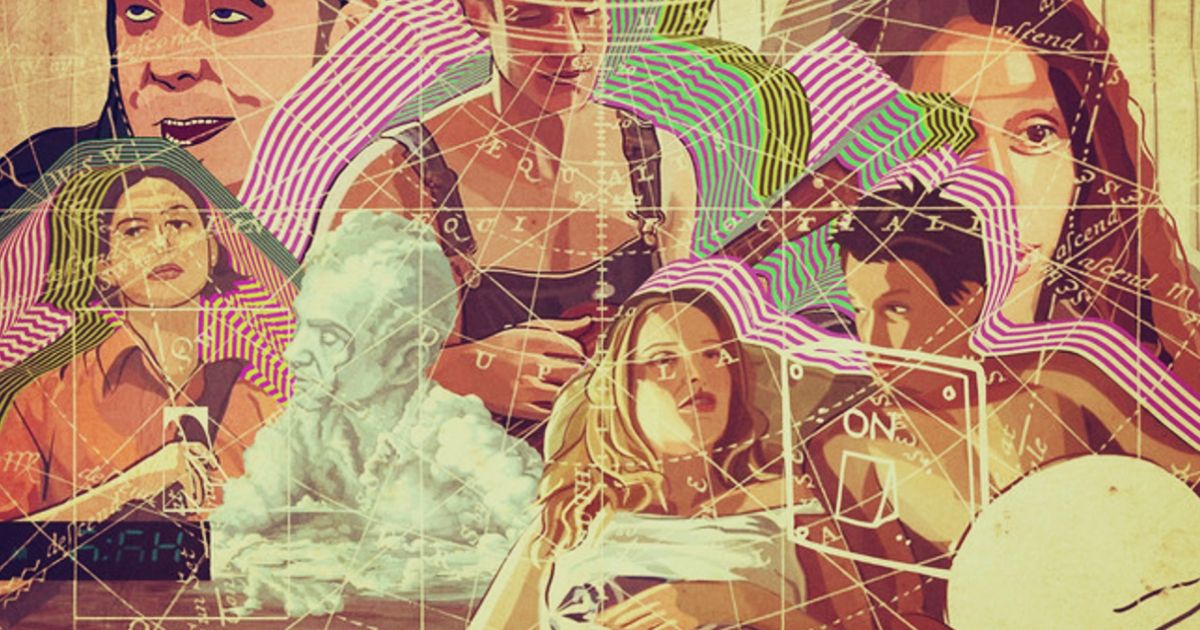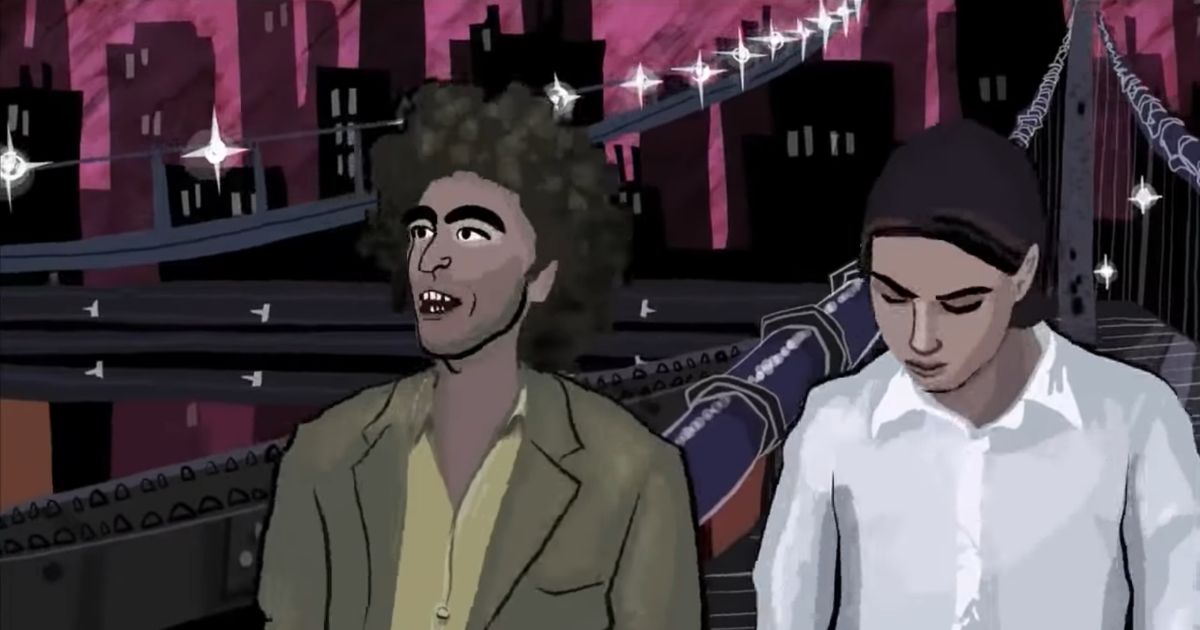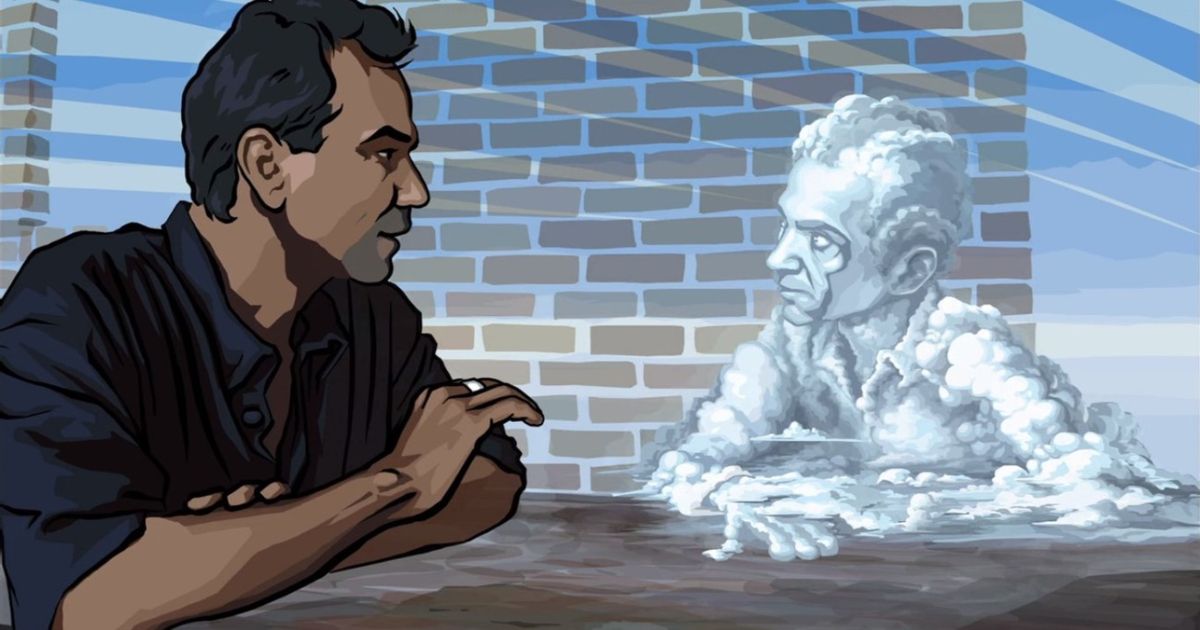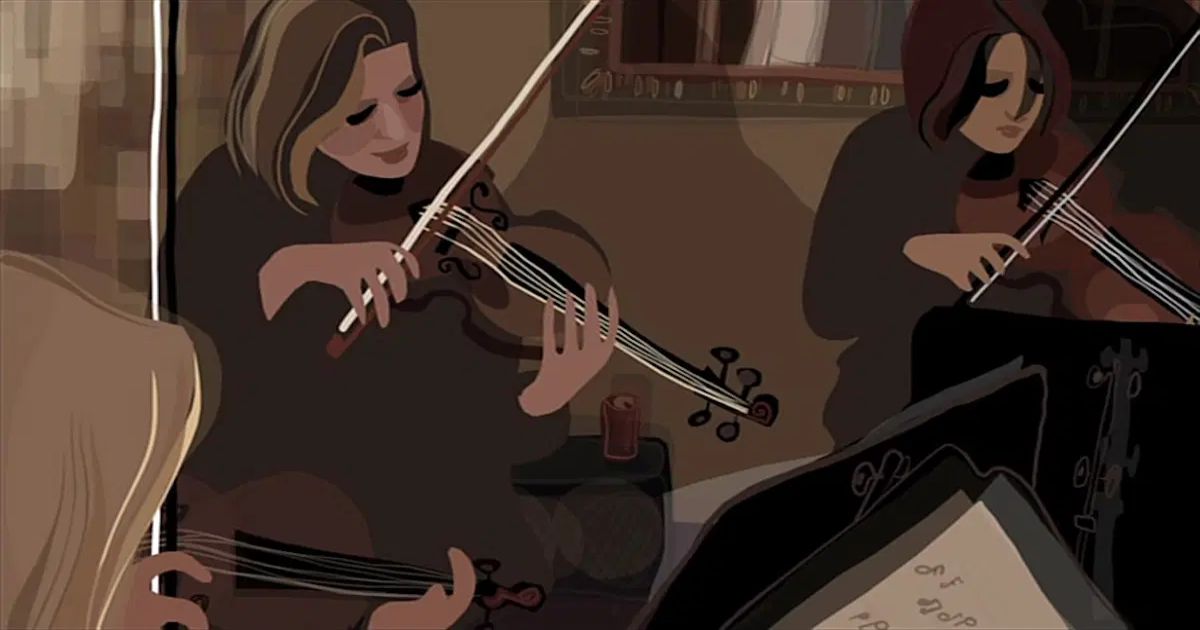"Dream is destiny," says a little girl, in the opening scene of the groundbreaking and fascinating movie, Waking Life. Written and directed by Richard Linklater and released in 2001, this experimental movie is philosophical and surreal, as it dances from one scene to the next; one character to the next. Most of the characters don't even have names, and the places are random and melt from one to another.
Even the main character (played by Wiley Wiggins from Dazed and Confused) lacks a name, though he is one of the few consistent characters throughout the movie, tying each disjointed scene together in his search to know whether he is dreaming, and how to wake up. He seems about the right age as to when most of us start exploring these existential ideas, somewhere between naive teenage years, and monotonous adulthood. The idea behind this unique and ambitious film was inspired by Linklater's own experiences with lucid dreaming as a teenager, when he would confuse dreams and reality, thinking he'd woken up as he wandered around in another Inception-like layer of a dream.
When Linklater made this movie, he was in a career slump, and had very little available on a budget. In light of his situation, Linklater decided to do something that the movie itself talks about and go for his dream - that is, his ideal goal for a movie. He was oriented towards something different, experimental, and a far cry from the typical Hollywood plot formula. That ambition would later come to define his career with the movie Boyhood, which is now considered one of the greatest films ever made. During production of Waking Life, Linklater would get so wrapped up in the project that he began to lucid dream again, which aided his creativity. “I was living it twenty-four-seven," he told Texas Monthly in an interview. "I’d be floating along, realize I was in a dream, then start to think, ‘What’s the right angle?’ I’d be taking down details to use in filming. Even some of the conversations in the movie grew out of my dreams.” Waking Life still has an impact on him to this day, influencing his subsequent movies, especially his most recent one, Apollo 10 1/2.
Waking Life itself feels like experiencing a dream, perhaps even Linklater's own dream, since it features both Ethan Hawke and Julie Delpy seeming to reprise their roles from a previous Linklater film. It's unclear if the actors throughout the movie are playing themselves, or characters, or a bit of both. The dream-like effect is communicated perfectly with the engaging use of rotoscope animation over-laid on top of real-life shots, varying in style and colors, accompanied by flighty, philosophical conversations about God, free will, and the nature of reality. The word "animate" even means to bring something to life, and that's what Linklater does with these ideas. "I see this as a realistic film about an unreality," Linklater said in an interview with Wired. "The gestures, the sound, the human expressions all seem real, but this reality is then re-interpreted artistically. It becomes a kind of moving painting."
The film also has an odd feeling of disquiet that moves parallel to a reassuring optimism which Linklater adds to the film, as it builds towards its end, which is left open to the interpretation of the viewer. The points being made may sometimes feel as if they aren't connected, but Linklater's vision for the film was building in his mind for years, and has a beautiful consistency that points to a kind of motivating hope amid despair which invites us to bring ourselves back into the present moment, no matter where that may be or what it may look like, whether it's a dream or not. Here are some of the themes running within the metaphysical journey through Waking Life.
On Dreaming and Waking
Per the title itself, Waking Life explores the nature of dreaming - both the phenomenon most people experience during sleep, and the dreams and ambitions we carry throughout our lives. The film itself is an endless series of dreams that the main character, Wiley, is having, which he can't wake up from. Many of the scene changes show him awakening, only to realize he is simply in another dream again. He grows increasingly anxious to wake up, and the metaphor seems pretty clear when a guy at a pinball machine, played by Linklater himself, appears in the film. After some conversation between them, during which Wiley recognizes Linklater from an earlier scene, he finally tells the pinball player that he has been stuck in these dreams for a while and asks, "How do you really wake up?" "I don't know," Linklater replies. "But... if you can wake up, you should, because you know someday... you won't be able to." He seems to be saying that if we don't take the time to wake ourselves up in our lives, we may eventually become stuck in an incurable unawareness of what is going on around us.
The movie is also about the nature of dreams - as in, our goals, our aspirations, the things we daydream of, long for, or strive towards. This movie itself is a kind of dream project of Linklater's; not just to work on movies, but to make the kind of introspective, unique, and compelling films that can have an impact on our lives. As one character puts it while strumming on a ukulele, "The trick is to combine your waking rational abilities with the infinite possibilities of your dreams. Because, if you can do that, you can do anything." And perhaps the only way we can do that is to wake up to our reality, instead of sleep-walking through our lives.
This is in many ways related to the philosophy behind Buddhism. The title of "Buddha", after all, means "Awakened One." He was the man who woke up. And the themes around Buddhism continue in the movie as it explores the relevance of the present moment in our lives.
On Film and the Present Moment
Perhaps one of the most interesting scenes is one that Wiley watches with us on a screen, as he sits in a theater. Filmmaker Caveh Zahedi is at a table speaking to poet David Jewell, both of them playing themselves. Zahedi dominates the conversation as he talks about French film critic Andre Bazin's thoughts on cinema, and the concept of the "Holy Moment." Bazin thought that film had a unique ability to capture reality in a direct and unfiltered way. Because reality was an aspect of God to Bazin, who was Christian and one of the most religious film theorists, the film was in a way capturing God as well. As Zahedi says:
"And that's what film has. It's just that moment, which is holy. You know, like this moment, it's holy. But we walk around like it's not holy. We walk around like there's some holy moments and there are all the other moments that are not holy. ...And if film can let us see that, like frame it so that we see, like, 'Ah, this moment. Holy.' And it's like 'Holy, holy, holy' moment by moment."
In Buddhism, the present moment is very important as well - it is the only moment that exists. But mentally, we live in our memories and cling to the past, or worry about our future and what happens next, instead of bringing ourselves into what is happening now. Zahedi goes on to admit that it isn't possible to walk around aware of the holy moment like that all the time, because more mundane things like conversations wouldn't be possible, including the conversation they're having about the holy moment. The entire scene is very self-aware also, as Zahedi talks about films without narrative, and why that can be compelling - within a film that has little if any narrative to it. It becomes almost unnervingly surreal to see Zahedi, playing a character but also as himself, talking about the layers of awareness and reality, unconsciously inviting the audience to step back another layer beyond watching the movie, and witness themselves watching these layers upon layers. And even as the scene beautifully closes over the two characters just looking at each other, their forms fade into clouds, and the dream drifts away.
On the Meaning of Life
Existentialism is the philosophical study of the nature of meaning and value in a life that can often seem devoid of it, and the question of meaning is potent throughout Waking Life. Wiley seems to be searching for something - a way to wake up, but also some kind of answers about life. How to live, why to live. And whether what we do is within our control, or if we are pushed around by fate, like the protagonist as he falls uncontrollably from one dream to the next. At one point he walks with philosopher Robert Solomon, who says to him, "existentialism is often discussed as if it's a philosophy of despair, but I think the truth is just the opposite... your life is yours to create."
Your life is yours to create. And yet it can seem so difficult to act on this, to engage our free will, when we feel so controlled by inevitability. Waking Life was released in 2001, only one month after 9/11, when despair and existential angst had gripped the nation. And 21 years later, it feels just as relevant, as our society comes out of a worldwide pandemic and struggles with isolating and overwhelming technological omnipresence. It's easy to tell someone, "Just wake up," as Linklater does in the pinball scene (pinball being an apt metaphor for being pushed around by fate), but the question is how.
The film doesn't necessarily answer this, and it benefits from that. It seems that more than anything, the movie invites us to be open to many answers, always exploring. As Roger Ebert said in his moving and personal review:
"With 9/11 still a wound in our minds... It was a soothing flow of intelligence, of questioning, of curiosity and imagination. There was a paralysis and hopelessness that seemed to descend upon us. The images of the towers collapsing belonged in a nightmare, but no, they were real. 'Waking Life' was a jolt, or nudge, a reminder that we could usefully ask big questions and propose possible answers. It affirmed our need to think for ourselves and not give in to dead-end despair."
More than anything, the heart of the movie seems to be asking us to retain our optimistic curiosity. To not give into despair, and as one character says, "Whatever you do, don't be bored." Instead of wanting to escape or look away, or stop caring and sleep-walk through life, we can wake up. We can become curious and aware of our surroundings, ourselves, and our reality - whether it is a dream or not. What really matters is not what we are presented with, but how we choose to look at it - and this kind of waking up is what allows us to be free, to paradoxically gain control by letting go, and pursue our dreams in the most fulfilling way.
The last scene of Waking Life mirrors the first one. Wiley floats upward off the ground, and clings to a car door handle to keep himself from drifting away. But then, he lets go, and floats into the sky. It is left to interpretation what this may mean; and perhaps we can enjoy the speculation and enquiring for its own sake, rather than clinging to any particular answer.




